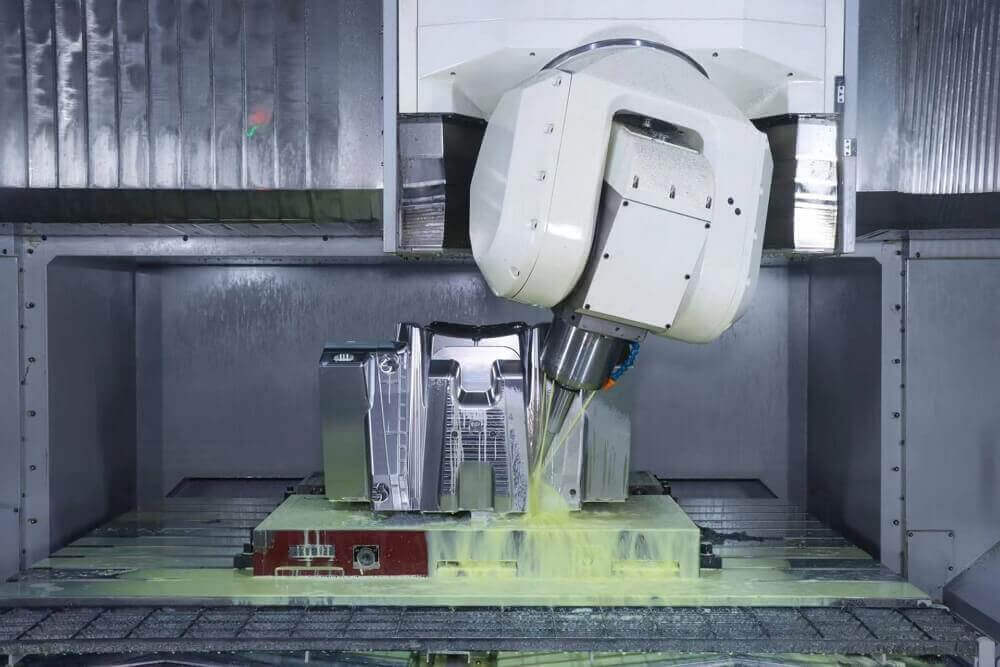A comprehensive guide to undercut machining
Undercut machining is a complex machining process that has its roots in chemical machining techniques. Initially, this method involved using a chemical etchant to penetrate the material laterally, creating a recessed cavity beneath the surface, known as an undercut.
Today, undercut machining has transitioned from chemical methods to mechanical methods, using machine tools to carve out these special cavities. This article aims to shed light on the complexity of the undercut machining process, including its evolution, various methods, and practical applications.
1.What is undercut machining?
Standard straight-cutting tools are highly effective at cutting through the top layer to form the desired cavity. However, due to their linear motion and shape, they are not well suited for creating cavities near or below these surfaces. This limitation requires specialized cutting techniques to achieve these types of cuts.
Undercut machining is a special machining process used to create recessed surfaces within a machined component. These CNC machined components with undercuts typically have one surface extending into another.
To understand an undercut, imagine the shape of a T-slot. The horizontal portion of the “T” represents the undercut. While the top of the slot is easily accessible and can be machined with standard tools, the horizontal undercut (which extends inward and parallel to the surface) cannot be reached directly from above.
Undercuts can be either external or internal. External undercuts often appear in molds and are relatively simple to machine because they are more accessible.
Internal undercuts, on the other hand, are hidden within the part and are more challenging to manufacture. These often appear within gear hubs where one surface part dips beneath another part.
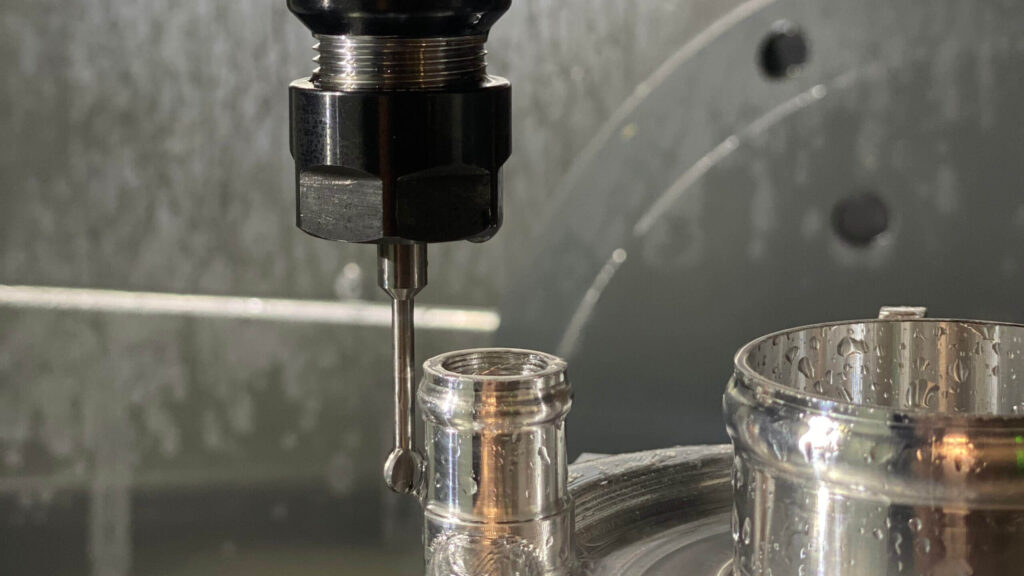
2.How Undercut Machining Works
CNC undercut machining is a challenging process that requires custom processes and specialized tooling.
Here is a detailed explanation of how machinists create undercuts in machining:
Step 1: Understand Geometry
The first step is to thoroughly analyze the geometry of the part. Examine the profile to determine if the undercut is internal or external. Document the machining strategies required and the sequence they should be employed to achieve the intended design.
Step 2: Choose the Right Tool
There is no one-size-fits-all tool for undercut machining; each job requires a specific CNC undercut tool. Select the tool based on the material and the specific profile and depth required.
Step 3: Set Up the CNC Machine
Prepare the CNC machine by entering detailed design specifications through CAD software. Install a specially designed spindle for undercut machining and clamp the material securely to the table.
Step 4: Machining Process
Adding the cutter and clamping the workpiece is essential, the CNC machine does the rest. It automatically cuts the material following the defined path.
Step 5: Quality Control
The final step in the process is a thorough inspection of the machined part. Verify that all dimensions are within the specified tolerances and required range. This quality control check ensures that the undercut meets all design requirements and the part functions as expected.
3.Importance of undercut machining in modern manufacturing
In most cases, we want to avoid using undercuts in our designs. However, their use becomes inevitable when we want to achieve functional and design goals. For example, undercuts help achieve interlocking and seamless assembly of components, especially in designs that require a secure locking mechanism without relying on external fasteners.
In addition, undercut machining also helps reduce weight, especially in the aerospace industry where every gram matters for fuel efficiency and payload capacity. This technique helps create internal cavities, while maintaining strength while eliminating unnecessary material elsewhere.
Undercut machining is also a part of most hydraulic systems. They are important channels for fluids, creating the necessary passages and spaces for the guided movement of liquids or gases.
In some cases, especially in CNC turning, undercuts are present at the end of the threaded portion of a shaft to provide clearance as the cutting tool transitions to a lower cross section.
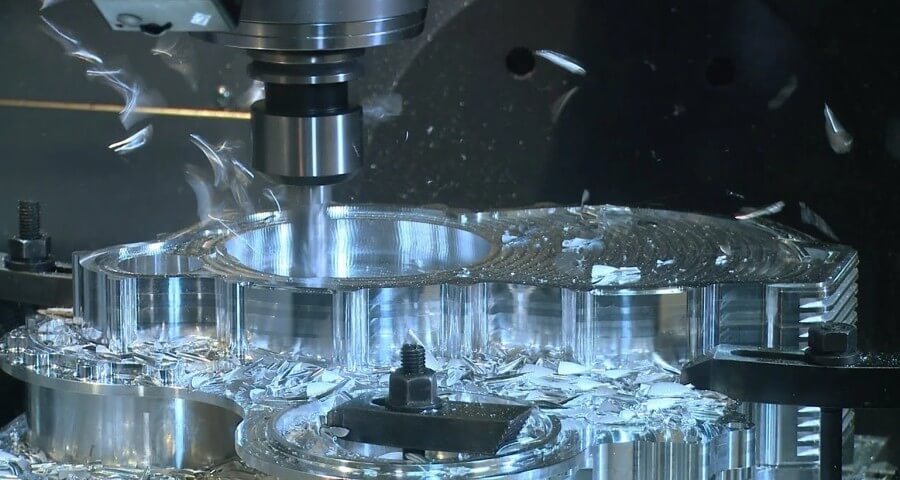
4.Common Types of Undercut Machining in Machining
An undercut is typically a recessed or depressed surface on a machined part. Undercuts can have different profiles in different applications. There are several types of undercuts depending on the geometric profile:
1) T-slot undercut machining
T-slot undercuts are in the shape of a “T”. This cavity is often used to hold parts together with a T-shaped fixture. The bolt head enters the slot and can be slid along the length for securement.
T-slot undercuts are done in two steps. First, a standard end mill creates the slot. Next, a special tool (T-slot milling cutter) is made into the T shape. The T-slot milling cutter has a vertical axis (called the shank) and a cutting blade that is perpendicular to the shank.
This blade cuts the undercut in a horizontal direction starting from the cross section of the previous slot. T-slot milling cutters are usually custom made by CNC turning depending on the nature of the work. However, the tool widths available are usually between 3 and 35 mm.
2) Single-sided undercut machining
Single-sided undercuts are specifically targeted to one surface of the workpiece. These undercuts are used when the component requires a precision groove on one side to accommodate a specific component, especially a seal or retaining ring.
A lollipop milling cutter has a single-sided cutting function and can be used to make single-sided undercuts. This lollipop milling cutter is clamped to a multi-axis CNC that moves the cutter to the perimeter of the workpiece where the cut is required.
3) Dovetail undercut machining
Dovetail undercuts are used only to connect two components. Dovetail undercuts are designed with an angled blade that consists of two parts: a wedge-shaped part and a recessed part. The wedge-shaped component locks securely into the recessed part, holding the two components together.
This undercut is quite common in the woodworking industry. The edge of this cutting tool is slightly tapered, with an angle between 45° and 60°.
4) Tapered Undercuts machining
Tapered undercuts have an inclined surface that tapers from one side to the other. This undercut type is particularly useful in applications that require a tight friction fit between two parts, such as mechanical components, or where the aesthetic of a smooth tapered surface can add value to the final product.
Machining a tapered undercut involves using a tapered end mill designed to precisely carve the gradual slope of the undercut.
5) Threaded Undercuts machining
Thread undercuts have internal threads, such as screws and bolts. They are essential for parts that need to be tightened. Specialized thread mills and taps are used to add threads to undercut parts. Thread mills carve the thread path in a spiral motion and are suitable for both internal and external threading.
6) Spherical Undercuts machining
These chamfers have a 3D curved surface that resembles a sphere. Spherical chamfers are used for parts that require rotational motion, such as ball joints or bearings.
Ball nose end mills help machine these curved undercut shapes. These end mills have rounded tips that efficiently cut curved contours with programmed CNC paths.
7) Keyway Undercut machining
Keyway undercuts have a specific purpose: to accommodate a key that locks two mechanical parts together and prevents them from rotating independently of each other. We machine these undercuts in shafts or other rotating parts that transmit torque. Gear systems are a good example.
Machinists use broaches or keyway milling cutters to create these slots. A broach is a tool with a series of progressively larger teeth that is used to remove material in a linear motion, creating a precise slot or keyway in one go. Whereas a keyway milling cutter is similar to a T-slot milling cutter. It is inserted into a milling machine where it rotates to remove material and form the slot.
8) Relief Undercut machining
Relief undercuts are usually created around bearings or shafts. Here, small grooves or notches are cut into the part to reduce stress concentrations or provide clearance.
Standard undercut end mills or slotting mills can machine these undercut profiles. The milling cutter moves along a predetermined path around the bearing or shaft, removing material to form the groove. This operation may require multiple passes to achieve the exact depth and shape.
9) O-Ring groove undercut machining
This groove is specifically cut to accommodate an O-ring, creating a tight seal between two components. Specialized O-Ring Groove Cutters ensure the exact size and location of the groove. They help prevent leaks in a variety of applications.
5.Technical Insights on Different Undercut Machining
Let’s take a look at some more technical details of these undercut types and explore their key applications, tools, and challenges.
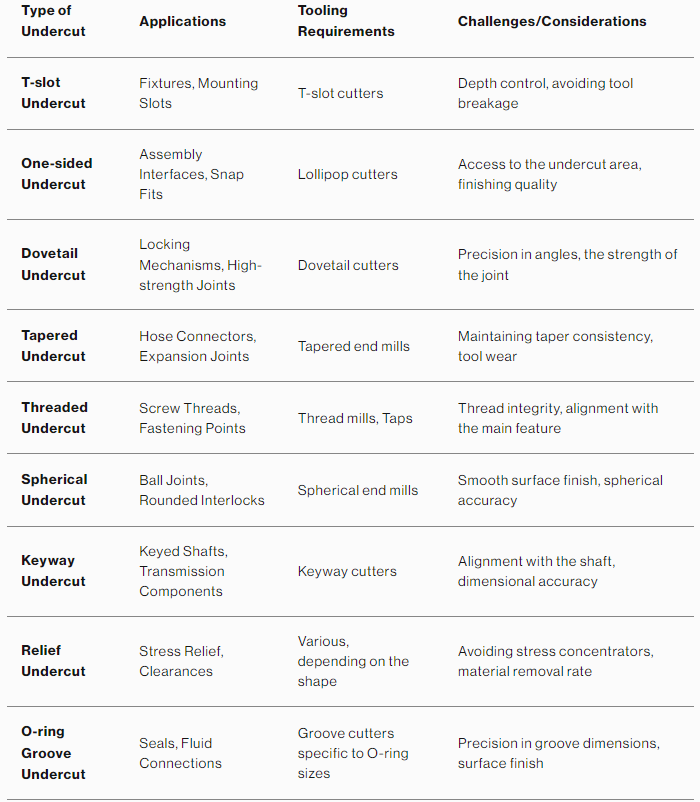
Although rare, undercutting is still used in a range of industries. Some key examples are as follows:
- Manufacturing (Moldmaking): Undercuts enable complex mold designs for complex part geometries.
- Electronics: Relief undercuts in housings enable assembly flexibility; T-slot undercuts in connectors facilitate secure connection of components.
- Automotive: Undercuts on gears and shafts enhance mechanical engagement; O-ring undercuts ensure a leak-proof seal.
- Medical Components: Barbed fittings with undercuts secure tubing without the need for additional fasteners.
- Aerospace: Undercut components help reduce weight and enable the integration of grooves for wiring without compromising structural integrity.
Need a precision CNC machined undercut component for your new product? Try Xavier’s CNC machining services. We have experience working in all of these areas. Whether you need a prototype or custom mold for a new product, you can ask us.
6.Challenges of Undercut Machining
Undercuts are a challenge to the machine compared to surface cutting. You need to carefully evaluate the design, tooling, and materials before you begin machining.
1) Technical Challenges of Undercut Machining
The geometry of undercuts requires tools that can fit into tight spaces and complex shapes that standard tools can’t always reach or effectively shape. Specialized undercut tools such as slotting cutters and lollipop cutters are designed for these tasks.
However, their unique shapes and sizes pose challenges to tool stability, wear, and precise control during machining.
2) Design Considerations
Designing undercuts requires predicting how the tool will contact and machine the desired feature without compromising the integrity of the part. This requires detailed planning to ensure that the undercuts both achieve their intended purpose and remain manufacturable.
Designers should consider a variety of factors, such as the accessibility of the undercut design to the machining tool and the potential impact on part function and assembly.
3) Substantial consideration
The workpiece material can also affect the feasibility and quality of the undercut. Some materials, such as hardened steel or ceramic, may be too hard or too brittle, increasing the risk of tool breakage or part damage during machining
Tool selection also depends on the material. Machinists should choose materials that can withstand the stress of the undercut machining and meet the final part performance requirements.
4) Tips for a perfect undercut
Chamfers are difficult to machine. Here are a few tips to ease this challenging process a little:
- Choose a standard size
For standard sizes, readily available tools on the market will do. For example, if the size of the T-slot undercut is a multiple of ¼ inch, you can most likely find a pre-made tool drill that will fit the job.
However, if you customize the design to be different from the standard size, the process will require special tools. These custom tools increase processing time and are expensive to manufacture. The price difference is almost 50% higher compared to a custom product.
- Avoid features that are too deep
Cutting tools are usually mounted on a vertical axis and have limited cutting depth, usually multiples of the diameter. If you try to cut deep, more than 1 times the diameter, the tool may fail or deflect. So stick to shallow cuts, preferably within the reach of the tool.
- Eliminate undercuts
While undercuts are essential for some designs, avoiding them altogether can sometimes make the manufacturing process more streamlined. Undercuts introduce areas of stress concentration and are expensive to manufacture.
Anytime you can join parts using alternative joining methods such as welding, adhesive bonding, or mechanical fasteners, eliminate undercuts during the design phase. Similarly, avoid undercuts when working with difficult-to-machine materials such as titanium or hardened steel.
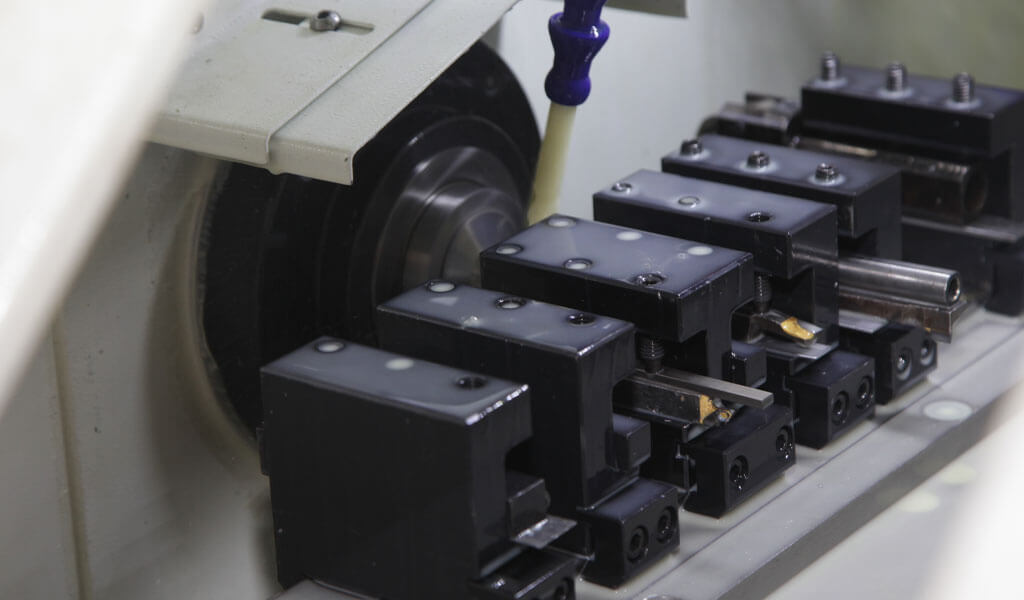
7.Work with a professional
Unique designs are a key element of undercuts. A professional machinist can help optimize the design for adjustments, help select tools, and come up with a machining strategy based on your specific needs.
Xavier offers precision machining service support. Our team of experts can help you design undercuts and then manufacture them with extreme precision.
8.Conclusion
Undercut machining is a key technology in modern manufacturing, helping to create complex and hidden features that are not possible with traditional methods. Its main use is to assemble parts without external fixtures.
Chemical etching and mold making can also produce undercuts. However, the latter method, while effective, does not match the precision of CNC machining.
If your prototype design includes undercuts and requires precise dimensions, contact us today to make your design a reality.
